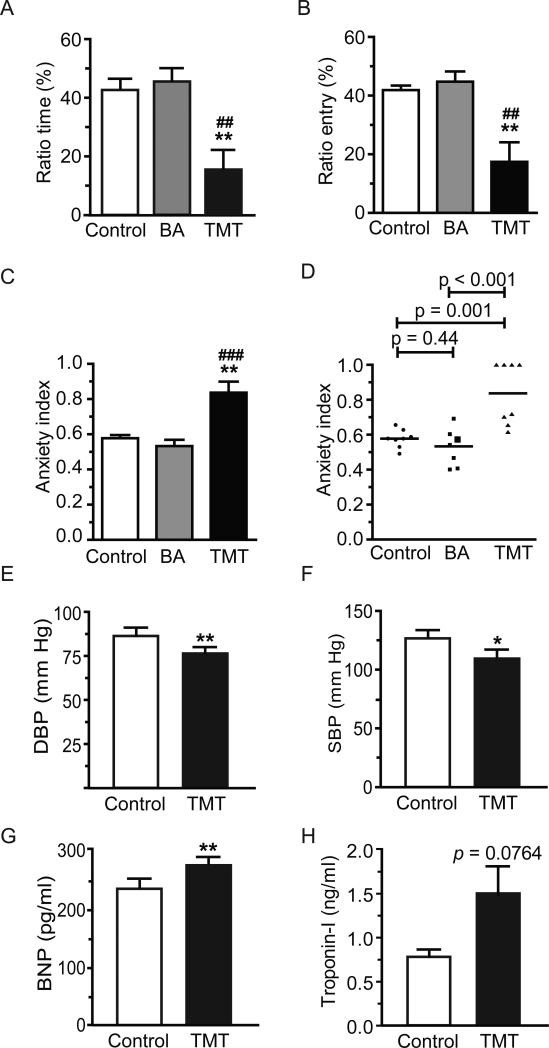Figure 1.
Rats exposed to TMT demonstrated significantly more anxiety-like behavior at 24h post-exposure than rats exposed to saline or butyric acid (BA): (A) time spent in the open arms (ratio time); (B) open arms entries (ratio entries); (C) anxiety index; and (D) scatter plot of anxiety index variability. Horizontal lines represent the mean of each group (n = 8-16). TMT also decreased BP and induced biochemical changes consistent with heart failure and myocardial damage: (E) diastolic BP; (F) systolic BP; (G) serum brain natriuretic peptide (BNP) levels, and (H) serum troponin-I levels. Data are expressed as mean ± s.e.m. (n = 10-16). * p<0.05; ** p<0.01.

